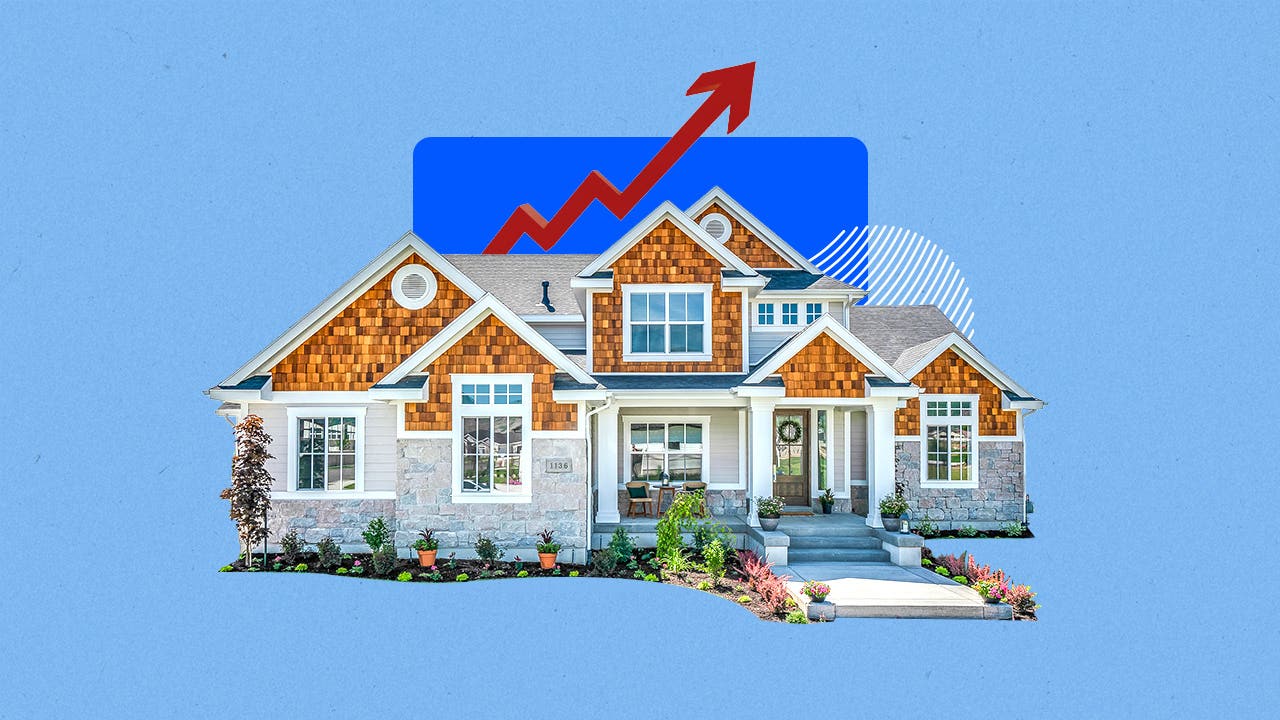Where are mortgage rates headed in April?

The Bankrate promise
At Bankrate we strive to help you make smarter financial decisions. While we adhere to strict , this post may contain references to products from our partners. Here's an explanation for .
Mortgage rates moved down sharply in March, a welcome trend for homebuyers who hope to make a deal during the spring selling season. Will rates continue the downward trend in April?
Housing analysts expect mortgage rates to continue to bounce around this month. While the consensus calls for rates to ease below 6 percent later this year, that forecast assumes the Federal Reserve will continue to successfully tame inflation, and that the remarkably resilient U.S. economy, finally, will slow.
“Forecasting mortgage rates in the best of times is tricky,” says Lisa Sturtevant, chief economist at Bright MLS, a multiple listing service that operates in the Mid-Atlantic. “Now, with economic factors tugging rates in different directions, it has become even more difficult to predict where rates will head this spring.”
Why mortgage rates fell in March
At the start of the month, mortgage rates were on the upswing. They went from 6.73 percent the week of March 1 to 6.84 percent the week of March 8, according to Bankrate’s national survey of lenders. They then reversed course, falling all the way to 6.48 percent in Bankrate’s March 29 survey.
The reason? A sudden banking crisis. Silicon Valley Bank failed March 10, followed by the collapse of Signature Bank on March 12.
They were the second- and third-largest bank failures in U.S. history, and the two meltdowns set investors on edge. The crisis also spurred the Fed to raise interest rates by 0.25 percentage point at its March 22 meeting, rather than the 0.5 percentage point increase it had been telegraphing.
The Fed’s softer rate hike can help mortgage rates to remain near 6.5 percent. With inflation easing slowly but steadily, rates will gradually move down in the following months.— Nadia Evangelou, senior economist and director of Real Estate Research at the National Association of Realtors
While the Fed doesn’t dictate mortgage rates, the central bank’s policies reverberate through the mortgage market. “Markets and how market participants interpret economic data will determine where long-term rates settle, not the Fed,” says Orphe Divounguy, senior macroeconomist at Zillow Home Loans.
Markets continue to digest the fallout from the failures of Silicon Valley Bank and Signature Bank. Now that the problems in the banking sector seem to be under control, inflation will likely return as the main driver of rates.
“Mortgage rates will continue to fluctuate this month depending on the new developments in the banking sector,” says Nadia Evangelou, senior economist and director of Real Estate Research at the National Association of Realtors. “But the Fed’s softer rate hike can help mortgage rates to remain near 6.5 percent. With inflation easing slowly but steadily, rates will gradually move down in the following months.”
What’s driving rates in April
Instability in the banking sector adds a wild card to the mortgage outlook. Since early 2022, mortgage rates have been driven by inflation – and by how aggressively the Fed has responded to rein in inflation.
“Inflation, the Federal Reserve’s next steps and banking sector developments are the three main factors that will affect mortgage rates and, consequently, the housing market,” says Evangelou.
With the banking crisis seemingly fading, Greg McBride, Bankrate’s chief financial analyst, says mortgage rates will continue to move with inflation.
“If financial instability concerns reemerge, mortgage rates are likely to fall,” says McBride. “If all is quiet on the financial stability front, the focus will go back to inflation. Until inflation moves meaningfully below 6 percent, mortgage rates will be range bound. In April and the months that follow, the odds will begin to favor a decline in mortgage rates – but the inflation level means we’re not there yet.”
The Mortgage Bankers Association predicts that mortgage rates will fall to 5.3 percent by the end of 2023 as the economy weakens – but the U.S. economy has continued to grow despite numerous predictions that it soon would run out of steam.
Inflation has been a hallmark of the economy’s strong rebound from the pandemic recession of 2020. Nearly everyone expected the U.S. economy to fall into a recession in late 2022 or early 2023, but that hasn’t happened, at least not yet.
“A number of leading indicators suggest the U.S. economy is still on solid footing,” Divounguy says. “That means inflation may still be slow to come down, leaving the door open for more Fed policy tightening and causing rates to remain elevated.”
Divounguy acknowledges that the optimistic outlook is by no means guaranteed. A darkening of the economic outlook could lead to lower mortgage rates.
“Sinking consumer confidence and growing recession fears could cause investors to reverse course and head back into the bond market, which could also head to a decline in mortgage rates,” says Sturtevant.
Another factor to consider is the “the spread,” the gap between 10-year Treasury yields and 30-year mortgage rates. That margin has been unusually high for the past year or so.
“The spread between the 30-year fixed rate mortgage rate and the 10-year Treasury yield is still very wide by historic standards,” says Sturtevant. “If that gap were to narrow, mortgage rates could decline.”
Homebuyers are jittery
The spring homebuying season is officially underway, and these are nervous times for buyers. Home prices remain elevated, and mortgage rates have been bouncing around. Sturtevant expects home shoppers to respond by keeping a keen eye on rates.
“Prospective homebuyers are watching rates closely, with good reason,” says Sturtevant. “A half percentage point increase in mortgage rates increases the typical monthly payment by more than $100. Mortgage rate volatility could disrupt the typical steady spring market surge. Instead, we may see more buyers acting opportunistically, making an offer quickly when they see a dip in rates or if they expect an imminent rate increase.”
Related Articles



Experts: Mortgage rates won’t rise much more — but also won’t go down any time soon
